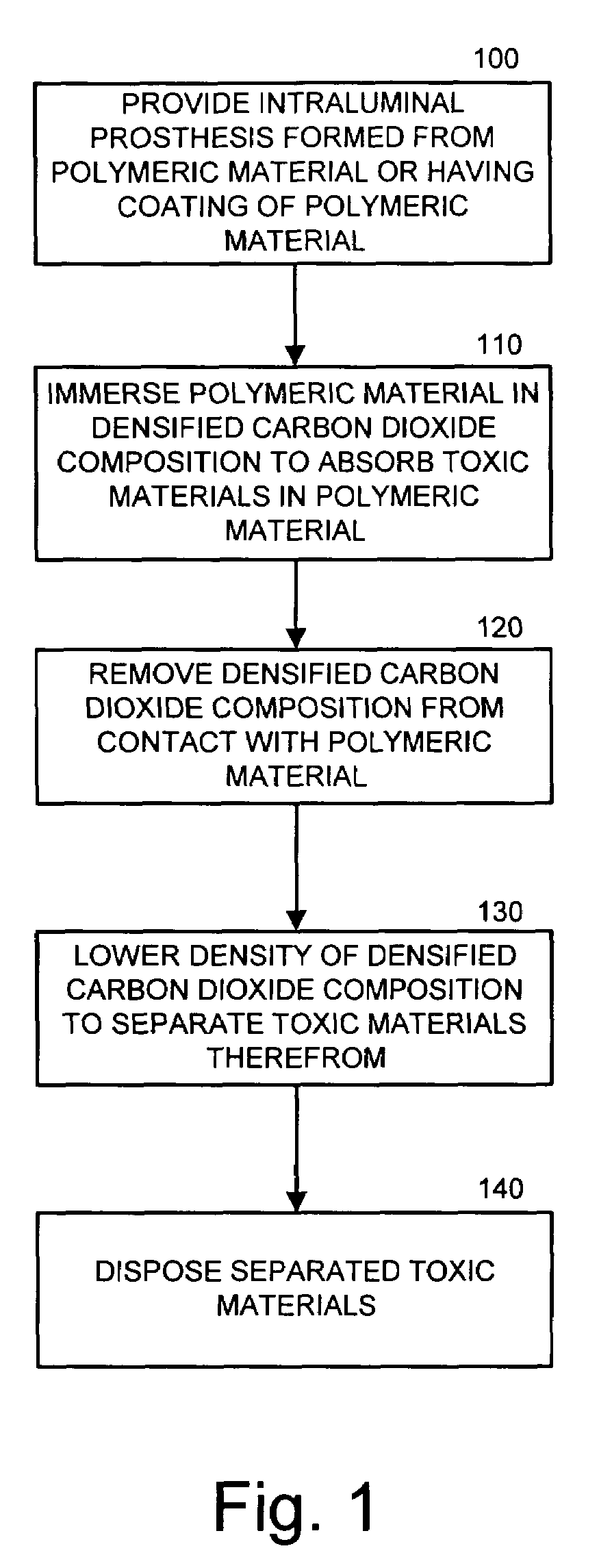Carbon dioxide-assisted methods of providing biocompatible intraluminal prostheses
a technology of carbon dioxide and prosthesis, applied in the field of medical devices, can solve the problems of toxic materials and negatively affecting the biocompatibility of materials, and achieve the effect of reducing the density of carbon dioxide and easy separation
- Summary
- Abstract
- Description
- Claims
- Application Information
AI Technical Summary
Benefits of technology
Problems solved by technology
Method used
Image
Examples
Embodiment Construction
[0011]The present invention now is described more fully hereinafter with reference to the accompanying drawings, in which embodiments of the invention are shown. This invention may, however, be embodied in many different forms and should not be construed as limited to the embodiments set forth herein; rather, these embodiments are provided so that this disclosure will be thorough and complete, and will fully convey the scope of the invention to those skilled in the art.
[0012]The term “biocompatible” as used herein, is intended to denote a material that upon contact with a living element such as a cell or tissue, does not cause toxicity.
[0013]The term “dosage regimen” is used herein to describe both exogenously administered and internally administered pharmacological agents. A dosage regimen includes both an amount of a pharmacological agent and time(s) that each dose is to be taken. A dosage regimen may also indicate whether a pharmacological agent is to be taken with food or not, a...
PUM
| Property | Measurement | Unit |
|---|---|---|
| average molecular weight | aaaaa | aaaaa |
| average molecular weight | aaaaa | aaaaa |
| average molecular weight | aaaaa | aaaaa |
Abstract
Description
Claims
Application Information
 Login to View More
Login to View More - R&D
- Intellectual Property
- Life Sciences
- Materials
- Tech Scout
- Unparalleled Data Quality
- Higher Quality Content
- 60% Fewer Hallucinations
Browse by: Latest US Patents, China's latest patents, Technical Efficacy Thesaurus, Application Domain, Technology Topic, Popular Technical Reports.
© 2025 PatSnap. All rights reserved.Legal|Privacy policy|Modern Slavery Act Transparency Statement|Sitemap|About US| Contact US: help@patsnap.com


